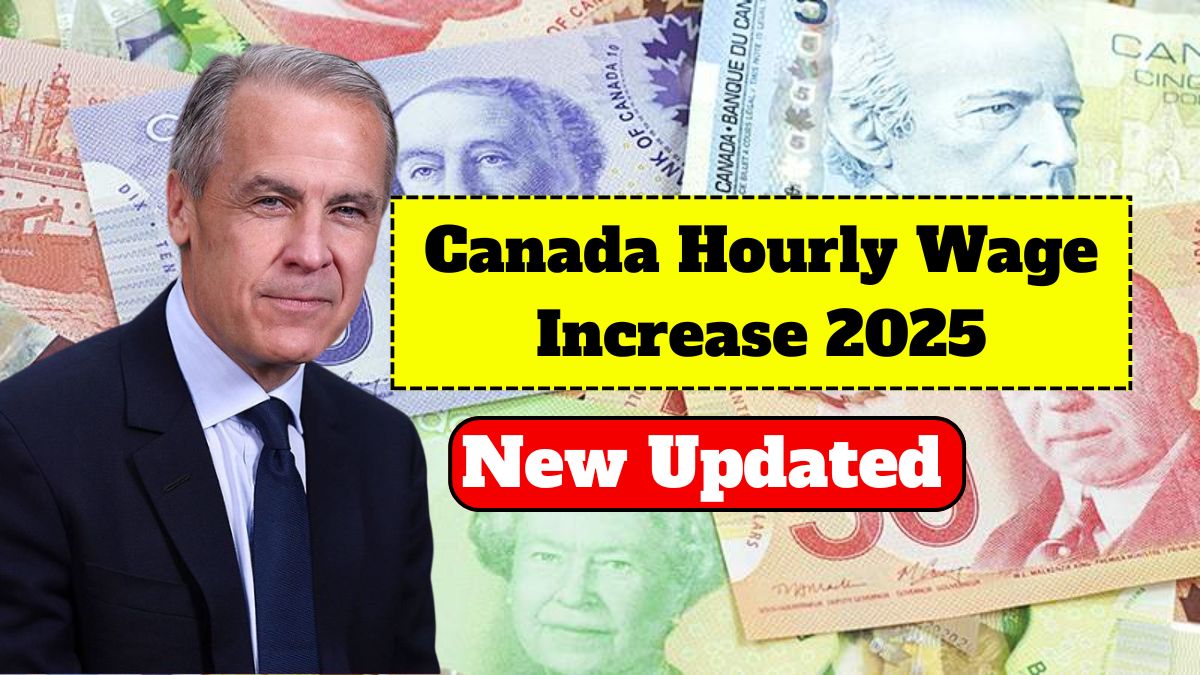Canada has always been the country with the most effective working laws and great employee welfare. In 2025, millions of workers across the nation have received news that the minimum hourly wage would be increased. This increase has been prescribed independently for each province and territory so as not to create an imbalance based on the local economy, inflation, and cost of living.
Let’s explore changes to the hourly wage in Canada in 2025, which provinces have the highest rates, and how it affects the common citizen.
Why was the 2025 wage increase necessary?
- Rise of inflation continued at an ever-increasing pace in Canada through the last years.
- In particular, food, rent, fuel, and healthcare prices affected personal budgets directly in 2023 and 2024.
- The minimum wage no longer reflected the cost of living according to a joint finding of government and labor organizations.
- Hence the Hourly Wage Rates were revised in 2025 to ensure a decent income for all workers.
New Wage Rates in Canada’s Different Provinces in 2025 (Province-Wise New Rates)
Each province and territory in Canada sets the minimum wage based on its economic situation and local needs.
The new rates announced for 2025 are as follows:
| Province / Territory | 2024 Rate (CAD/hour) | 2025 New Rate (CAD/hour) |
|---|---|---|
| Ontario | $16.55 | $17.20 |
| British Columbia | $16.75 | $17.75 |
| Alberta | $15.00 | $15.50 |
| Quebec | $15.25 | $16.00 |
| Manitoba | $15.30 | $15.80 |
| Saskatchewan | $14.00 | $15.00 |
| Nova Scotia | $15.00 | $15.75 |
| New Brunswick | $14.75 | $15.50 |
| Newfoundland and Labrador | $15.00 | $15.60 |
| Prince Edward Island (PEI) | $15.40 | $16.00 |
| Yukon | $16.77 | $17.45 |
| Northwest Territories | $16.05 | $16.80 |
| Nunavut | $16.00 | $16.80 |
Who will be affected by the new wage rates?
- Full-Time and Part-Time Employees: This increase will apply to all employees working in any sector—retail, healthcare, service, or industry.
- Students & Temporary Workers: In many provinces, this new wage will also apply to student and temporary workers, although some locations have slightly lower rates.
- Small Business Owners: While expenses for small business owners will increase, this will lead to improved employee productivity and loyalty in the long run.
Impact of Hourly Wage Increase on the Common Citizen
- Improved Standard of Living: With the new rates, the monthly income of ordinary workers may increase by approximately $100–$250, making household budgets a little easier.
- Relief from Rising Inflation: This increase is an important step to offset rising prices in groceries, transportation, and rent.
- Employment Stability: When employees receive fair wages, the tendency to change jobs decreases and the employment market stabilizes.
- Boosting Economic Growth: When people have more money to spend, shopping in local markets increases, which also has a positive impact on GDP.
New Rules Implemented by the Government (Updated Rules 2025)
The new 2025 rules include not only a pay increase, but also several amendments related to employee safety and transparency:
- Equal Pay Policy: Both men and women will receive equal pay for equal work.
- Overtime Regulation: Overtime payments will be mandatory for those working more than 40 hours per week.
- Payroll Transparency: Employers will now be required to clearly detail all deductions on payslips.
- Remote Workers Inclusion: Work-from-home employees will receive the same pay and benefits as office employees.
Are these changes permanent or temporary?
The Canadian government has clarified that this increase is permanent, and that the Annual Wage Review will be conducted annually in April or October the purpose is to ensure wage rates are regularly adjusted to inflation and economic changes.
Comparing Canada’s Minimum Wage to Other Countries
| Country | Minimum Average Wage in 2025 (USD/hour) |
|---|---|
| Canada | $12.50 – $13.50 (Average CAD $16.50) |
| United States (USA) | $7.25 – $16.00 (Varies by State) |
| United Kingdom (UK) | $13.00 (National Living Wage) |
| Australia | $15.70 |
It’s clear that Canada is paying its workers a respectable and competitive wage.
From an Average Worker’s Perspective – Real-Life Example
Sarah is a cashier living in Ontario. She previously earned $16.55 per hour. Now, under the new rates in 2025, she will earn $17.20.
According to her, “It may seem like a small amount, but at the end of the month, it’s about $120 extra, enough to cover my rent and grocery expenses.”
Conclusion
The 2025 Hourly Wage Increase in Canada is not just an economic policy, but a symbol of social reform this demonstrates that the government is taking the needs of its citizens seriously and is taking concrete steps towards “Fair Pay for Fair Work.” The new wage rates will not only improve living standards but also make Canada’s labour market stronger and more balanced This is a positive change for workers that will provide them with economic security, confidence, and future stability.
FAQs
Q1. What is the new hourly wage in Canada for 2025?
A. In 2025, the minimum hourly wage across Canada has increased, with most provinces now paying between $15.00 and $17.75 CAD per hour depending on local rules.
Q2. When will the new wage rates take effect?
A. The updated hourly wage rates are expected to take effect from April 1, 2025, though some provinces may implement them slightly later.
Q3. Who benefits from the 2025 hourly wage increase in Canada?
A. The wage increase applies to all full-time, part-time, and hourly workers across various industries, including retail, hospitality, and healthcare.
